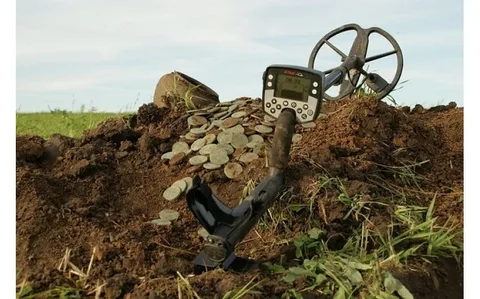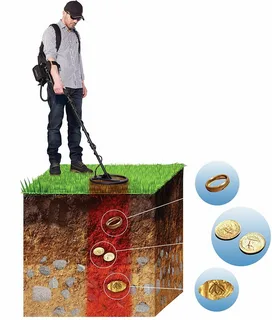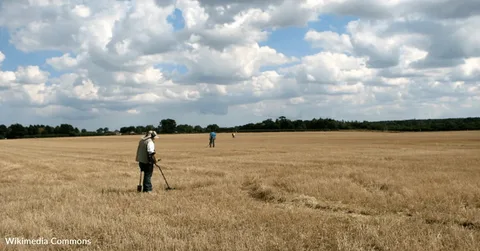Mining is an essential industry that drives economic growth and provides valuable resources for various sectors. However, the impact of mining on local communities is a complex and often contentious issue. In this paper, we will explore the impact of mining on local communities, focusing on the social, economic, and environmental effects of mining activities. We will also examine the different perspectives and experiences of local residents, as well as the measures taken by mining companies to mitigate their impact on surrounding communities.
Exploring the impact of mining on local communities involves examining various aspects such as social, economic, and environmental effects. This includes assessing changes in employment opportunities, income levels, and infrastructure development, as well as examining the potential displacement of communities and the degradation of natural resources. It also involves understanding the cultural and social dynamics within the community, and how mining activities may affect traditional practices and community cohesion. Additionally, studying the long-term effects of mining on local communities is crucial in developing sustainable practices and mitigating any negative impacts.
The Evolution of Mi ning Techniques: From Ancient to Modern

The mi ning industry has a long and rich history, with its practices evolving over time to meet the changing demands of society. From ancient civilizations using basic tools to today’s advanced machinery and technology, mi ning has played a crucial role in extracting valuable resources from the earth. Whether it’s coal, gold, gemstones, or even minerals from outer space, the mi ning industry continues to shape our world in significant ways.
The evolution of mining techniques has been a long and complex process, spanning thousands of years. From the simple tools used by ancient civilizations to the advanced machinery and technology utilized in modern mining operations, the methods of extracting valuable minerals and resources have undergone significant changes.
Ancient mining techniques often relied on manual labor and basic tools such as picks, shovels, and primitive explosives. As civilizations advanced, so too did their mining capabilities. The discovery of new materials and the development of metallurgy led to more sophisticated techniques, including the use of underground tunnels and shafts, as well as the introduction of hydraulic mining methods.
The industrial revolution brought about further advancements in mining technology, with the invention of steam-powered machinery and the use of explosives on a larger scale. These developments allowed for the extraction of resources on a much grander and more efficient level.
In modern times, mining has become highly mechanized, with the use of heavy machinery, advanced drilling techniques, and the implementation of safety and environmental regulations. The industry has also seen a shift towards more sustainable and responsible mining practices, as well as the exploration of new frontiers such as deep-sea mining.
Overall, the evolution of mining techniques from ancient to modern times reflects the continual advancement of human civilization and our ever-growing need for valuable resources. As technology continues to progress, it is likely that mining techniques will continue to evolve in the future.
Mi ning Safety: How Regulations and Technology Save Lives

Mi ning Safety: How Regulations and Technology Save Lives delves into the crucial role that both regulations and technology play in ensuring the safety of miners. The book explores how strict regulations and the implementation of cutting-edge technology have contributed to the reduction of mining accidents and the protection of workers in the industry. It also examines case studies and real-life examples to illustrate the impact of these measures on saving lives in the mining sector. Overall, the book provides a comprehensive look at the intersection of regulations and technology in the context of mining safety.
The Economic Impact of Mi ning on Local Communities
See also: prospecting tools gold

Mining can have significant economic impacts on local communities. The industry often provides employment opportunities for local residents, as well as resources for the development of infrastructure and services in the area. Additionally, mining operations can generate revenue for the local government through taxes and royalties, which can be invested in public projects and initiatives. However, it’s also important to consider the potential negative impacts, such as environmental degradation and social disruption, and to carefully manage the balance between the benefits and drawbacks of mining activities in local communities.
Exploring the Environmental Consequences of Mi ning Practices

Exploring the environmental consequences of mining practices involves studying the impact of mining on ecosystems, air and water quality, and local communities. This includes understanding how mining processes such as extraction, processing, and transportation can result in deforestation, soil erosion, habitat destruction, and water contamination. Researchers also investigate the long-term effects of mining on biodiversity, human health, and the overall environmental sustainability of the area. This exploration is essential for identifying potential threats to the environment and developing strategies to mitigate or prevent negative impacts from mining activities.
Mi ning 101: A Beginner’s Guide to the Industry
Mi Ning 101: A Beginner’s Guide to the Industry is a comprehensive introductory resource for individuals looking to learn about the mining industry. It covers key concepts and principles, as well as provides an overview of different types of mining, environmental impacts, regulations, and the role of technology in the industry. The guide also includes information on career opportunities and potential paths for advancement within the mining sector. Overall, Mi Ning 101 serves as a valuable starting point for those seeking to understand the basics of the mining industry.
Uncovering Hidden Treasures: The Art of Mi ning for Gemstones
Uncovering Hidden Treasures: The Art of Mining for Gemstones is a comprehensive guide to the process of locating, extracting, and refining gemstones from the earth. The book covers various mining methods, tools, and equipment used to extract gemstones, as well as the geological formations where these treasures are typically found. Additionally, it delves into the history and significance of different types of gemstones, and provides valuable insights for aspiring gemstone miners. Whether you are a novice or an experienced miner, this book offers valuable information on the art and science of gemstone mining.
The Role of Mi ning in Shaping the Industrial Revolution
Mining played a crucial role in shaping the Industrial Revolution by providing the necessary raw materials for industrial production. The extraction of coal, iron, and other minerals fueled the growth of factories and helped to power the machinery that drove industrialization. Additionally, mining also led to technological advancements in areas such as transportation and metallurgy, further accelerating the industrial transformation. The expansion of mining operations also created a demand for labor, leading to urbanization as people migrated to mining regions in search of employment. Overall, the development of mining was instrumental in driving the Industrial Revolution and transforming economies and societies around the world.
From Pickaxes to Robotics: The Automation of Mi ning Processes
From Pickaxes to Robotics: The Automation of Mining Processes explores the evolution of mining technology, from early manual tools to the advanced robotics and automation systems used in modern mining operations. The book provides a comprehensive look at the impact of automation on productivity, safety, and environmental sustainability in the mining industry. It also delves into the challenges and opportunities presented by the increasing use of robotics in mining, offering valuable insights for industry professionals, researchers, and students.
The Future of Space Mi ning: Expanding Beyond Earth’s Resources
Space mining refers to the extraction and utilization of natural resources found on celestial bodies such as asteroids, the Moon, and other planets. The future of space mining involves expanding beyond Earth’s resources by tapping into the vast potential of these extraterrestrial bodies. This expansion offers significant opportunities for accessing valuable materials such as rare metals, water, and precious minerals that could be used to support future human colonies in space, as well as sustain life and fuel exploration missions. The development of space mining technology and the regulatory framework required to govern these activities are crucial elements in shaping this emerging industry. As advancements in space exploration continue to progress, the potential for space mining to become a vital component of humanity’s expansion into the cosmos becomes increasingly conceivable.
Mi ning and Indigenous Rights: Navigating a Complex Relationship
Mi ning and Indigenous Rights: Navigating a Complex Relationship is an academic article that explores the complex and often contentious relationship between mi ning (mining) companies and indigenous communities. The article delves into the various issues and challenges that arise when mi ning projects encroach upon indigenous lands, from the violation of indigenous rights and land sovereignty to environmental degradation and displacement of indigenous communities. It also addresses the legal and ethical implications of mi ning on indigenous territories, as well as the strategies and approaches that can be employed to ensure that indigenous rights are respected and upheld in mi ning operations. The article provides valuable insights and analysis for policymakers, stakeholders, and scholars working in the fields of indigenous rights, environmental justice, and natural resource governance.










